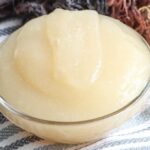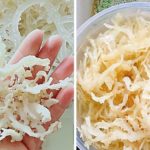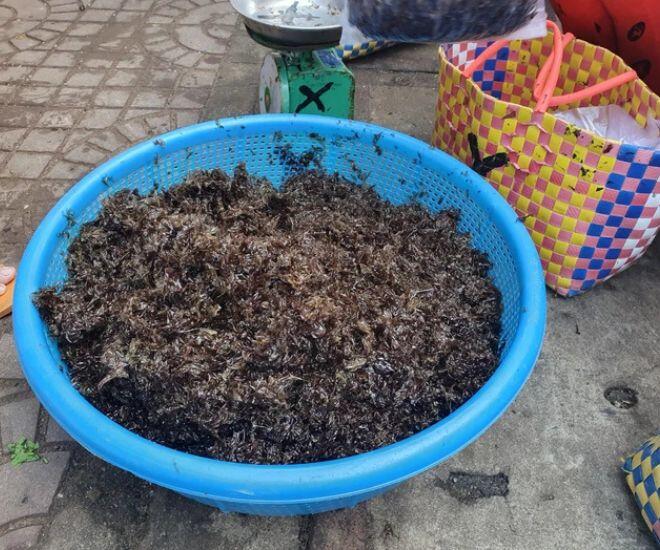
Annually, around the 9th month of the lunar calendar, when the relentless drizzle comes to an end, the central region’s coastal cliffs are adorned with a new, sleek, and dark-hued cloak, courtesy of the emergence of sea moss. This moss season spans approximately three months, commencing from late September or early October and extending until December on the lunar calendar. This period marks the ideal time for the proliferation of this short-stemmed sea vegetation, as the salinity of the seawater significantly diminishes post-monsoon.
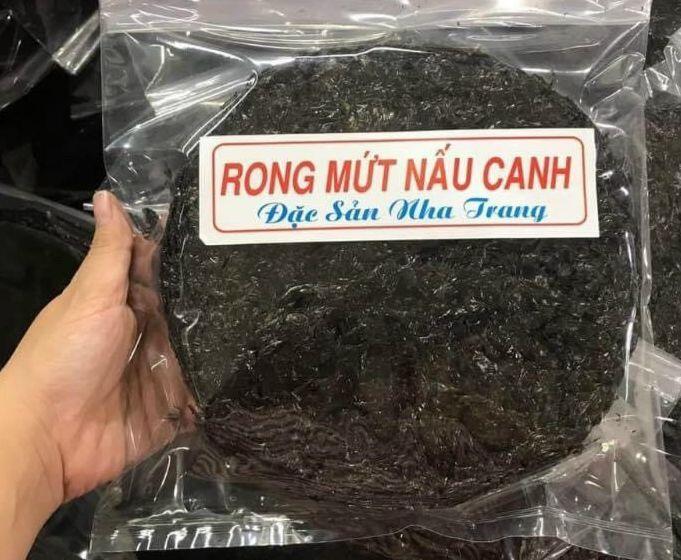
Sea moss can be categorized into two primary varieties: stem moss and thread moss. Stem moss, which boasts thicker stems and lower prices, typically grows on coastal rocks closer to the shore, retailing at approximately 150,000 VND per kg during the season. In contrast, thread moss, with its finer, thread-like stems, thrives on rocks further from the shore and commands a higher price tag of around 200,000 VND per kg. Nam O Beach, situated in Hoa Hiep Bac Ward, Lien Chieu District, in the city of Da Nang, is renowned for its abundant growth of sea moss.
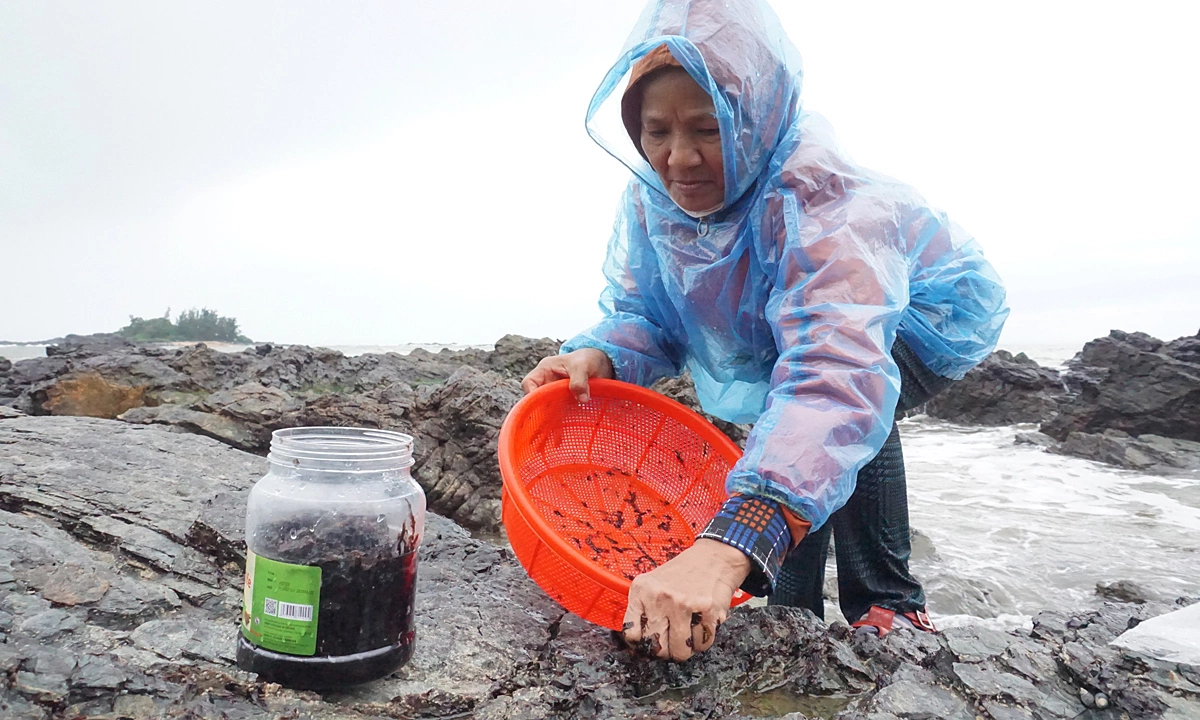
Despite being likened to a “gift from heaven,” harvesting sea moss is no easy feat. It is a laborious, meticulous, and perilous endeavor. Fishermen often embark on their moss-gathering journey as early as 4 or 5 in the morning, or even earlier when the night still cloaks the world in darkness and the receding tide exposes the slippery, moss-clad rocks.
Those tasked with harvesting the moss don tight-fitting attire, gloves to shield their hands from the sharp-edged mussels, and headgear to brave the chilly predawn hours and the frigid seawater. Guided by the faint beam of a headlamp, they navigate the darkness, cautiously clambering over slippery rocks and treacherous cliffs. While the moss thrives where waves crash with greater intensity, this very location poses a significant risk, as the powerful waves could unexpectedly sweep them off their feet and into the sea.
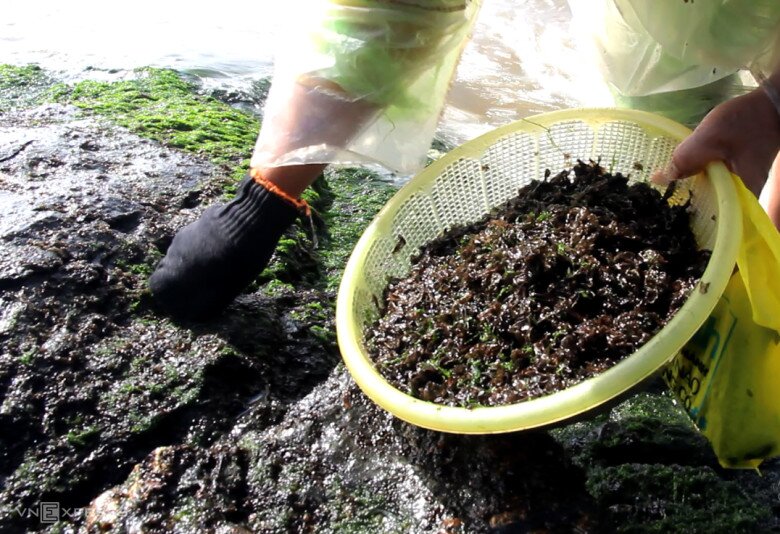
Harvesting sea moss is an especially painstaking process due to the vegetation’s tenacious grip on the rocks and its slippery texture. As a result, harvesters employ a thin piece of metal to carefully scrape off the moss, bit by bit, before collecting it in a net bag. Notably, a significant proportion of those engaged in harvesting sea moss in Nam O are women. They stoop over the rocks, patiently and meticulously working for hours until midday, when the seawater begins to rise again. After long hours of back-breaking labor, their bodies may ache, but the rewards are well worth the effort. Locals in Nam O share that during the initial phase of the season, when the moss grows abundantly, they can harvest an average of 3 to 6 kg of sea moss daily.
Once harvested, the sea moss undergoes a thorough cleaning process: first with seawater, followed by two rinses in freshwater, before being left to dry. It can then be consumed fresh or dried for future use.
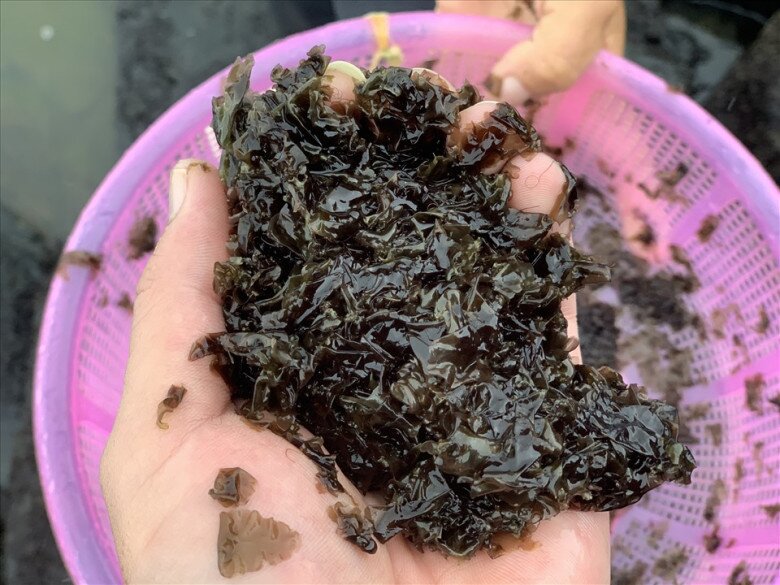
In the past, sea moss was considered a humble delicacy, a staple in the modest meals of coastal dwellers. However, in recent years, it has undergone a remarkable transformation, ascending to the status of a coveted specialty sought after far and wide. Connoisseurs of cuisine even proclaim that sea moss is among the most delectable varieties of seaweed in Vietnam.
According to scientific research, sea moss, scientifically known as Porphyra and belonging to the Rhodophyta division of red algae, thrives in brackish or shallow seawater. This variety of seaweed stands out for its exceptional nutritional profile, surpassing many other types of seaweed. Sea moss is rich in essential amino acids and vitamins, including B1, B2, A, and C, along with trace elements and minerals vital for human health. Notably, its fat content is relatively low, making it an ideal choice for individuals adhering to dietary restrictions or managing conditions such as diabetes, high cholesterol, or fatty liver disease.
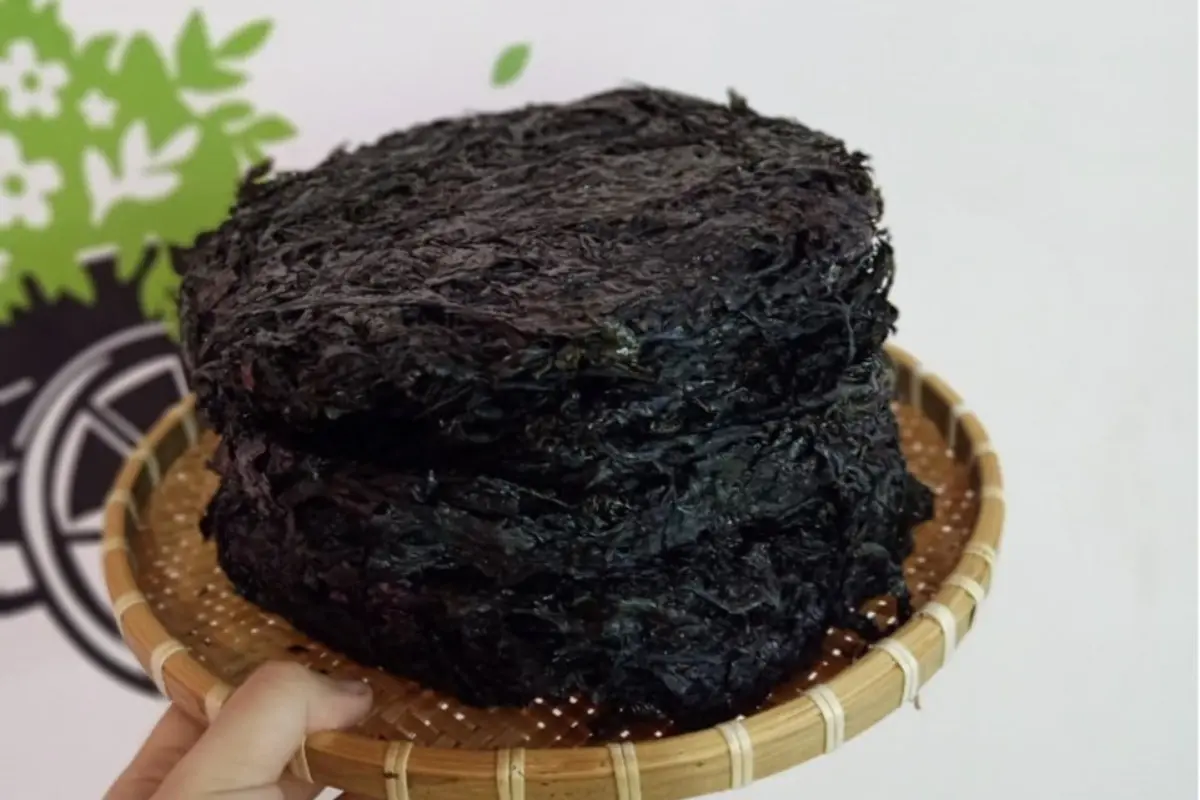
Sea moss lends itself to a myriad of delectable preparations. One of the most popular dishes is a soup featuring sea moss paired with minced meat, tofu, or shrimp, resulting in a refreshing and savory concoction. Alternatively, sea moss can be stir-fried with garlic and sesame oil, yielding a delectable crunchy treat.
Given its propensity to perish quickly and its delicate nature, dried sea moss products are highly sought-after in the market and on e-commerce platforms. As the year draws to a close, patrons of restaurants and eateries in Da Nang or Phu Yen may indulge in bowls of naturally sweet and savory sea moss soup, embodying the essence of the rugged central region.

























